Title
Calder in the AlpsPosted In
Sculpture, ExhibitionDuration
14 July 2016 to 31 March 2017Location
| Detailed Information | |||||
|---|---|---|---|---|---|
| Title | Calder in the Alps | Posted In | Sculpture, Exhibition | Duration | 14 July 2016 to 31 March 2017 |
| Location |
Gstaad
Switzerland | ||||

Alexander Calder, ‘Untitled’ (1976), Installation view, Oberbortstrasse 24, Gstaad, Switzerland, 2016. © 2016 Calder Foundation, New York / DACS London. Courtesy Calder Foundation, New York / Art Resource, New York and Hauser & Wirth. Photo by Jon Etter.
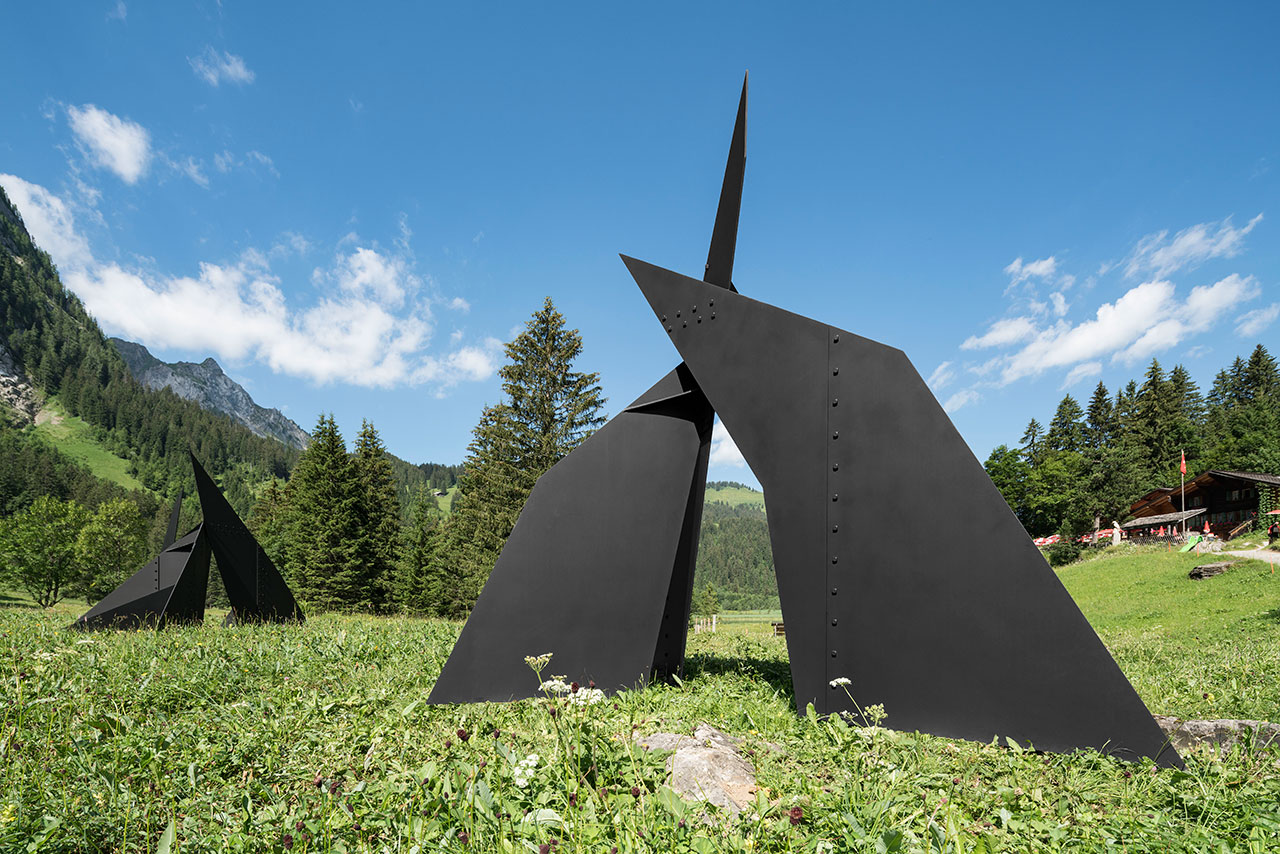
Alexander Calder, ‘Six Planes Escarpé’ (1967) and ‘Four Planes Escarpé’ (1967). Installation view, Lake Lauenen, Gstaad, Switzerland, 2016. © 2016 Calder Foundation, New York / DACS London. Courtesy Calder Foundation, New York / Art Resource, New York and Hauser & Wirth. Photo by Jon Etter.
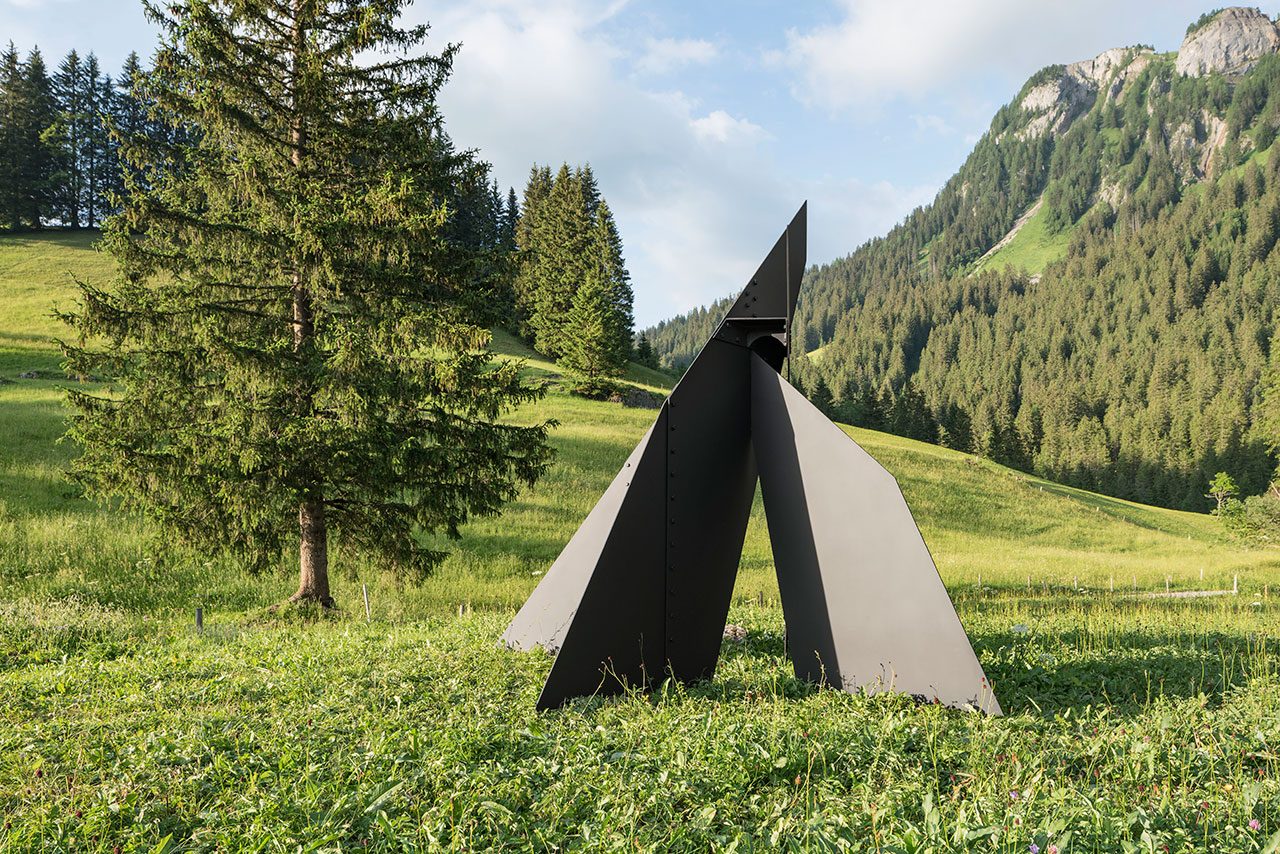
Alexander Calder, ‘Four Planes Escarpé’ (1967). Installation view, Lake Lauenen, Gstaad, Switzerland, 2016. © 2016 Calder Foundation, New York / DACS London. Courtesy Calder Foundation, New York / Art Resource, New York and Hauser & Wirth. Photo by Jon Etter.
Made with simple, industrial materials such as sheet metal, rods, bolts and paint, the sculptures are the perfect example of how fluidity and gracefulness can be created even with the toughest of ingredients... Indeed, all it takes is the artistic talent to bend them into telling a different story. With that in mind, it's not surprising how the interplay between these sculptures and their temporary environments is so balanced; for the environment imparts the sculptures with a dynamism only a living space can bring, whereas they offer the environment the cadence of their organic shapes, each of which possesses a modernity that transcends the era in which they were created.
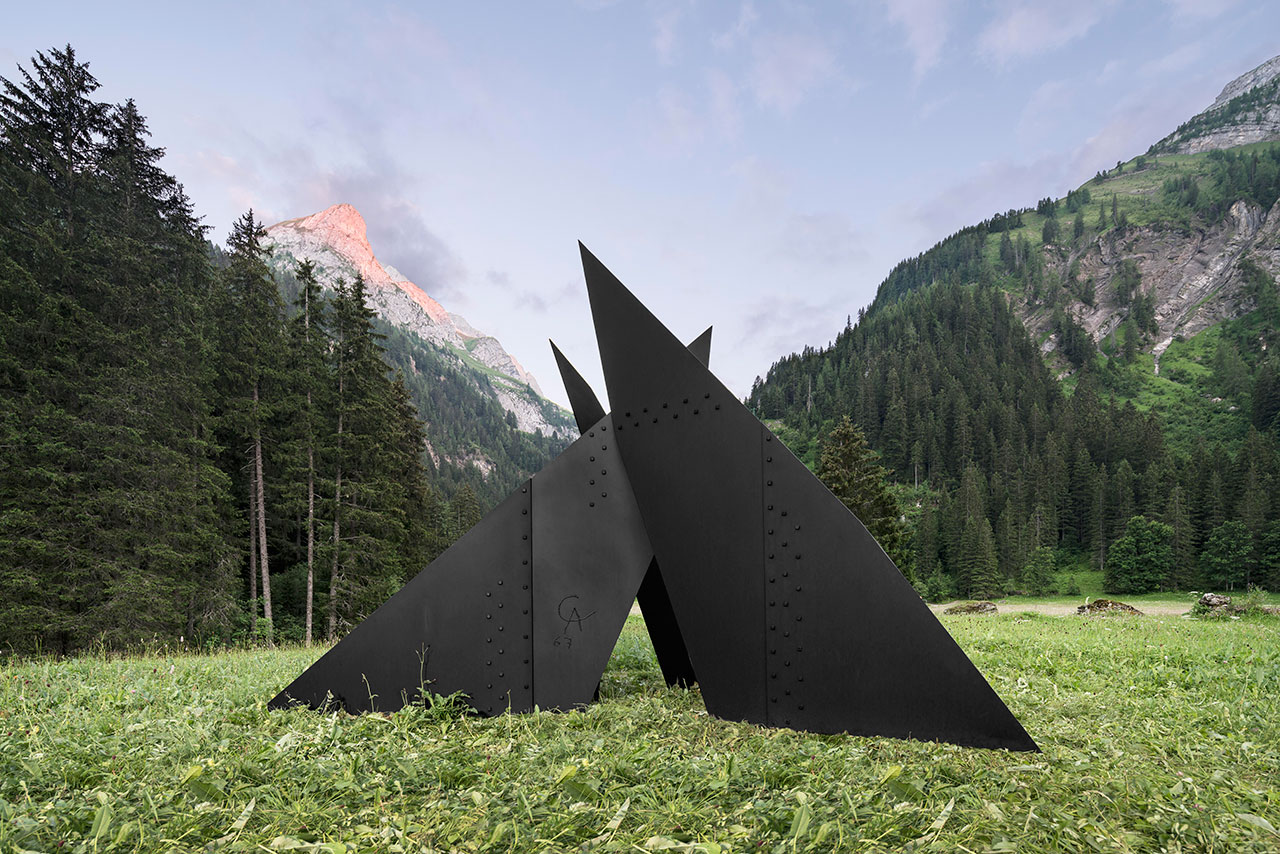
Alexander Calder, ‘Six Planes Escarpé’ (1967). Installation view, Lake Lauenen, Gstaad, Switzerland, 2016. © 2016 Calder Foundation, New York / DACS London. Courtesy Calder Foundation, New York / Art Resource, New York and Hauser & Wirth. Photo by Jon Etter.
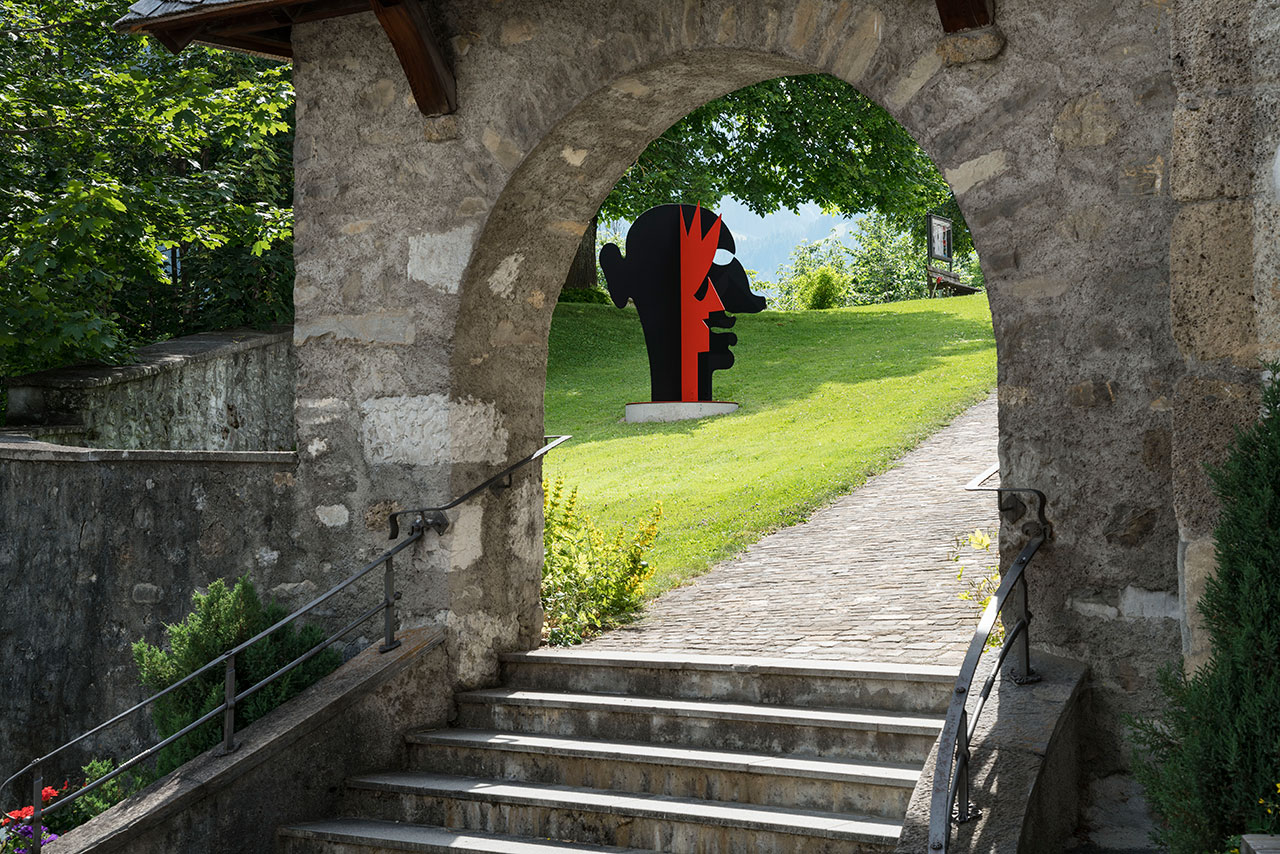
Alexander Calder, ‘A Two-Faced Guy’ (1969). Installation view, Church Saanen, Gstaad, Switzerland, 2016. © 2016 Calder Foundation, New York / DACS London. Courtesy Calder Foundation, New York / Art Resource, New York and Hauser & Wirth. Photo by Jon Etter.
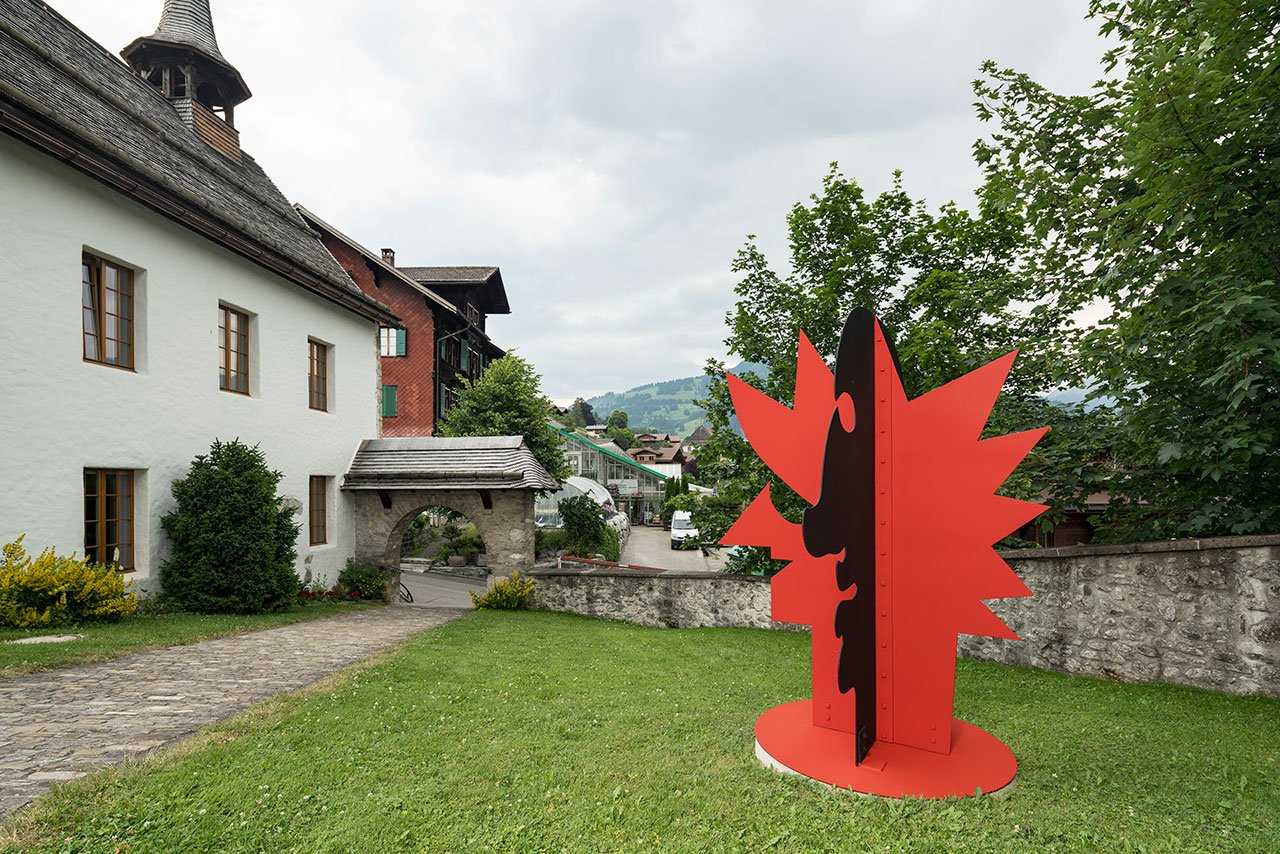
Alexander Calder, ‘A Two-Faced Guy’ (1969). Installation view, Church Saanen, Gstaad, Switzerland, 2016. © 2016 Calder Foundation, New York / DACS London. Courtesy Calder Foundation, New York / Art Resource, New York and Hauser & Wirth. Photo by Jon Etter.

Alexander Calder, ‘A Two-Faced Guy’ (1969). Installation view, Church Saanen, Gstaad, Switzerland, 2016. © 2016 Calder Foundation, New York / DACS London. Courtesy Calder Foundation, New York / Art Resource, New York and Hauser & Wirth. Photo by Jon Etter.
Take for instance the mobile, 3 Flèches Blanches, which can be seen on the grounds of the Le Grand Bellevue Hotel. Although it was created in 1965, its elegant poise silently commands the attention of the imposing, gilded building in front of it. As with all of Calder's works, no superfluous elements have been added through which to tell its story, just the perfect balance that the artist always managed to bring with just a few, well-thought-out lines and geometric forms. There's genius in that.
Perhaps one of the artist's secrets however can be discerned in the composition of the displayed sculptures, Four Planes Escarpé and Six Planes Escarpé (1967) where the composition the lines created between the angular pieces comprising each sculpture, as well as the space between the two sculptures themselves, speak loudly. Negative space, it appears, can have a dramatic voice.
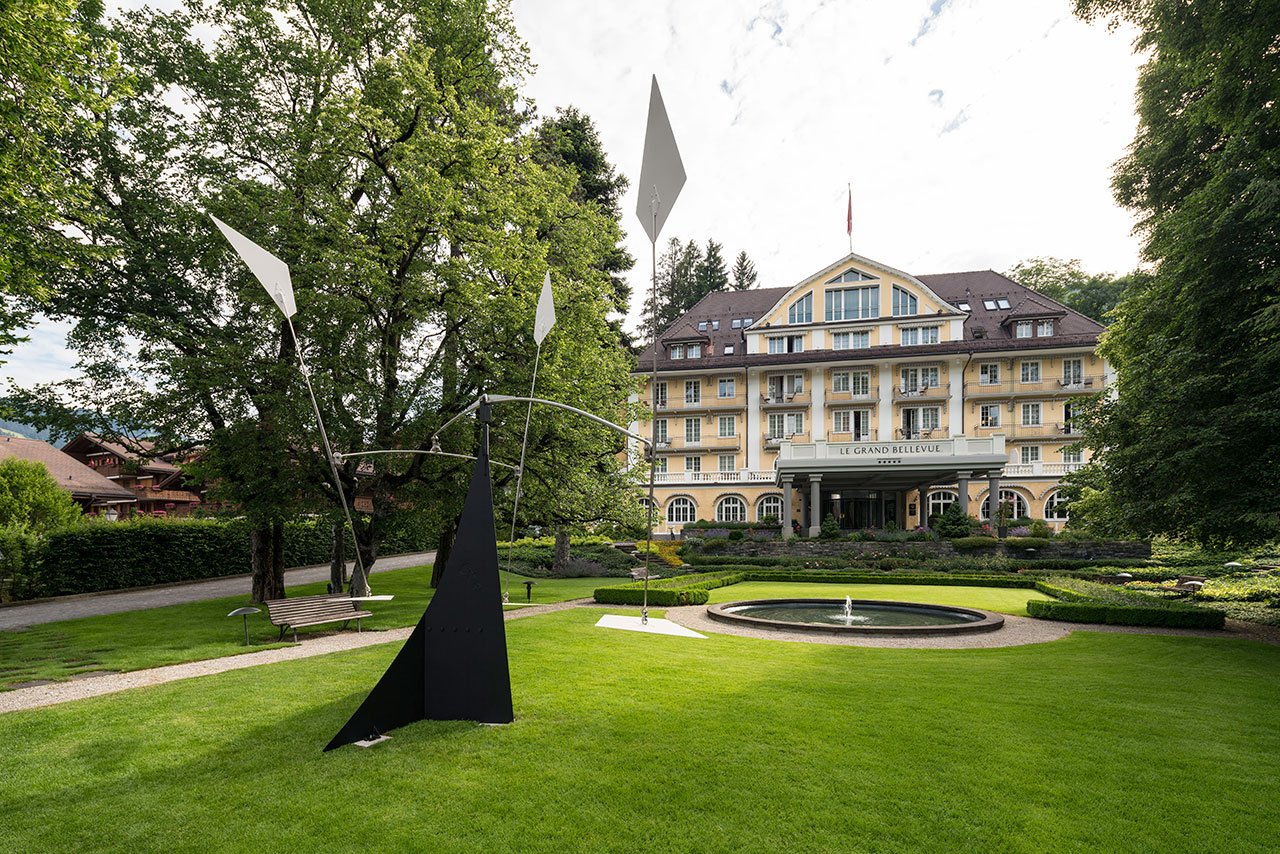
Alexander Calder, ‘3 flèches blanches’ (1965). Installation view, Le Grand Bellevue, Untergstaadstrasse 17, Gstaad, Switzerland, 2016. © 2016 Calder Foundation, New York / DACS London. Courtesy Calder Foundation, New York / Art Resource, New York and Hauser & Wirth. Photo by Jon Etter.
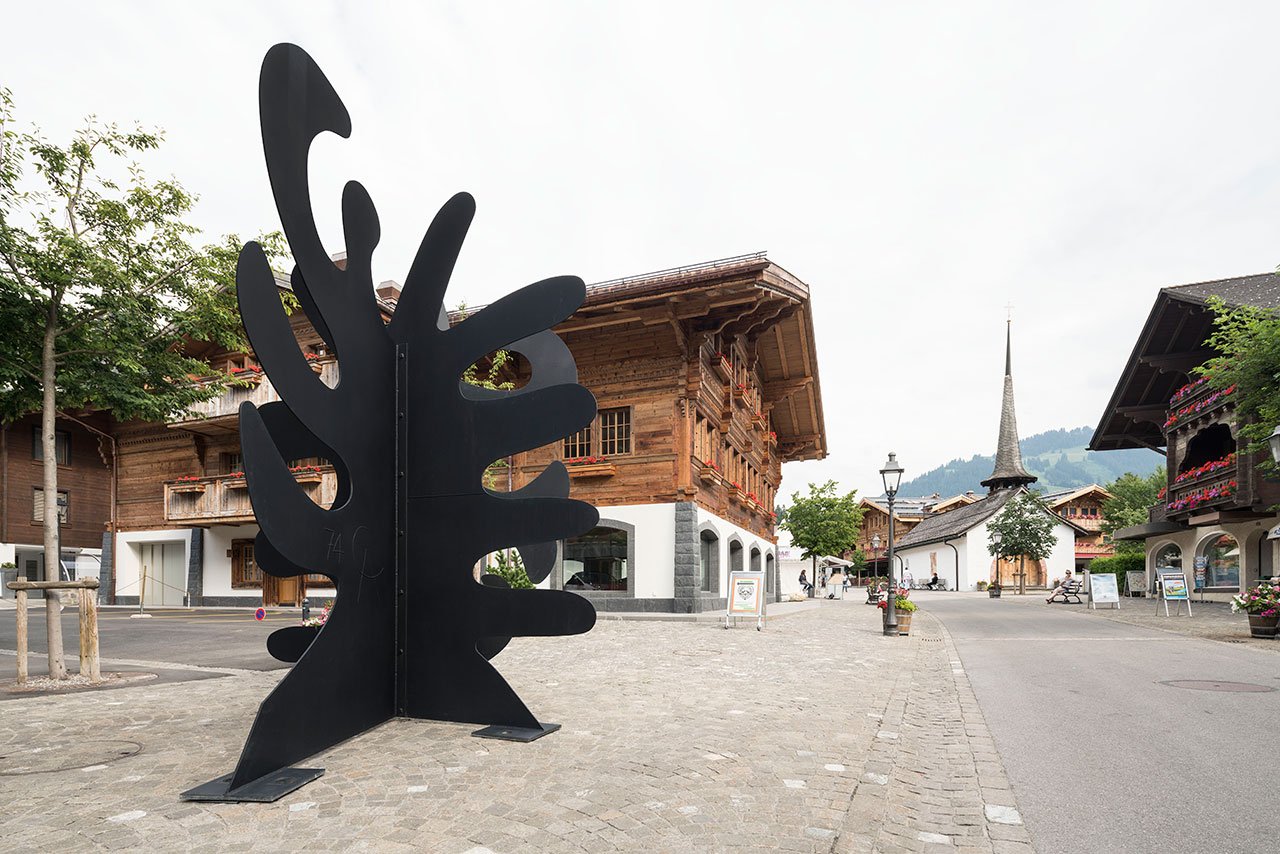
Alexander Calder, ‘Tripes’ (1974). Installation view, Promenade 66, Gstaad, Switzerland, 2016. © 2016 Calder Foundation, New York / DACS London. Courtesy Calder Foundation, New York / Art Resource, New York and Hauser & Wirth. Photo by Jon Etter.
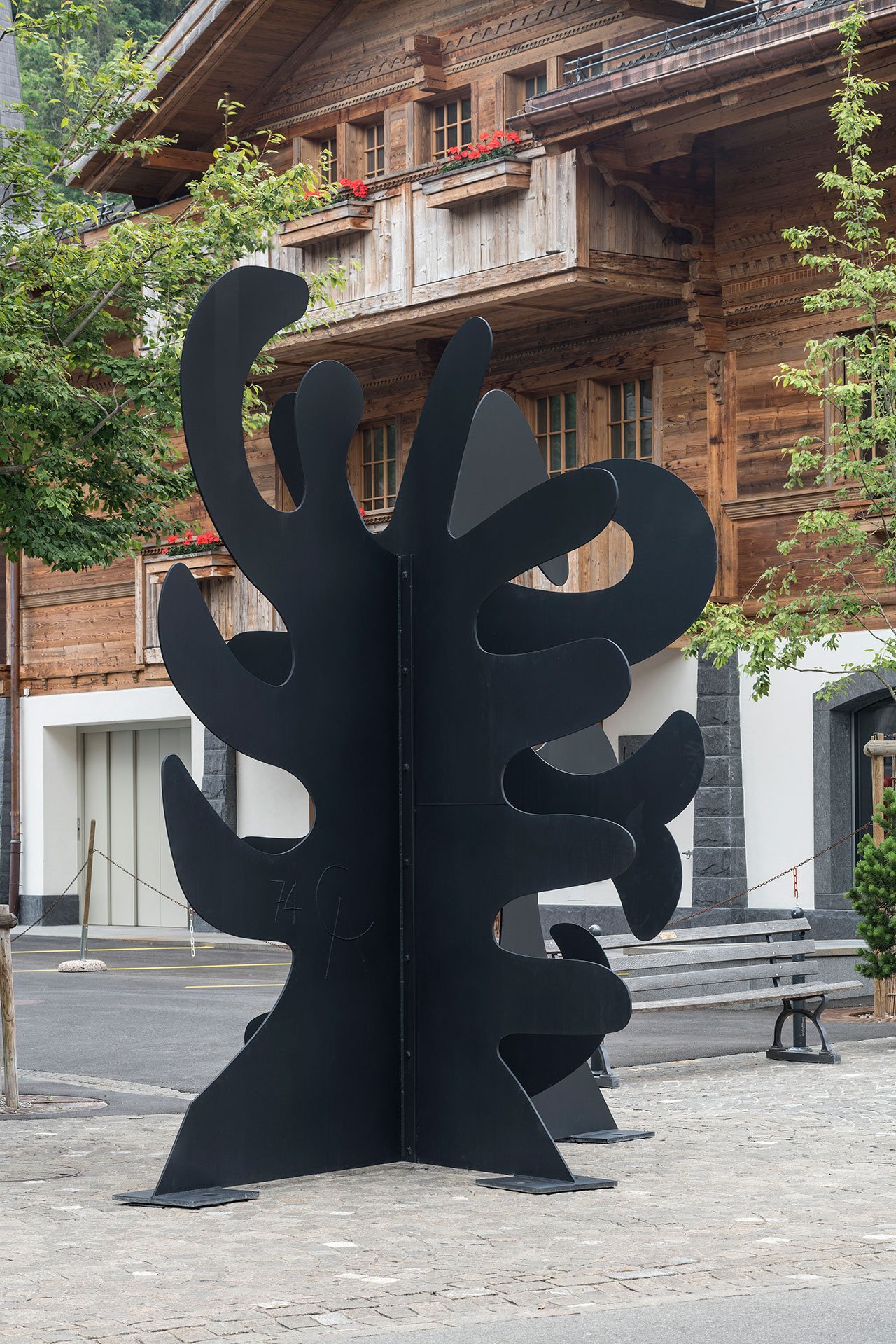
Alexander Calder, ‘Tripes’ (1974). Installation view, Promenade 66, Gstaad, Switzerland, 2016. © 2016 Calder Foundation, New York / DACS London. Courtesy Calder Foundation, New York / Art Resource, New York and Hauser & Wirth. Photo by Jon Etter.















